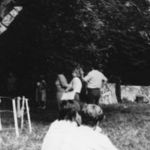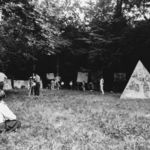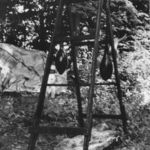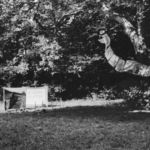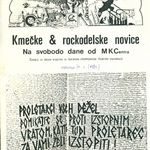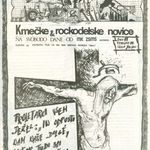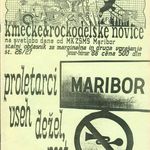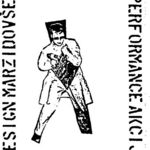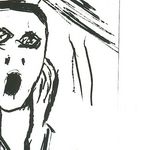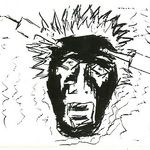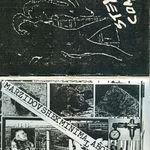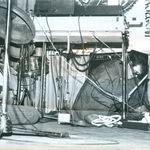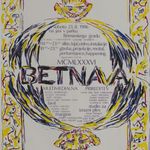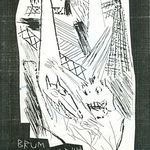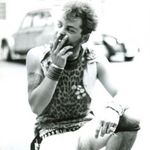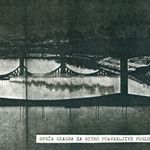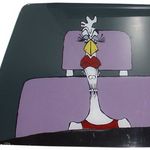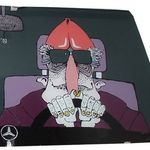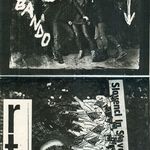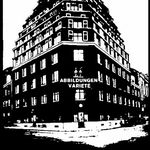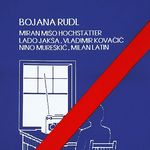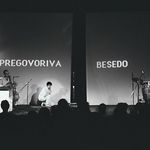Us, You, Them
'MI, VI, ONI' / US, YOU, THEM
Fragments of the 1980s Alternative Practices in Maribor
UGM Maribor Art Gallery, Strossmayerjeva 6
opening: Tuesday, 5 November 2013
Exhibition US, YOU, THEM. Fragments of the 1980s Alternative Practices in Maribor is the first presentation of creative and subcultural scene of the 1980s in Maribor and its surroundings. The exhibition comprises over 250 fragments, documents and artworks from private collections and archives as well as reconstructions of performances and public space interventions. The first retrospective exploration and presentation of fragmentary material of alternative practices in Maribor includes novelties introduced in the 1980s, such as the first Slovene fanzine Pankzija by Danilo Celan, one of the first Yugoslav independent and private publishers MML – Marzidovshekminimal laboratorium and creative interventions in Maribor courtyards and parks.
Since the 1960s we have witnessed departures from hermetic modernism as the mainstream artistic practice and the appearance of neo-avant-garde movements as an alternative to the established art system. The late 1970s and early 1980s in Yugoslavia and Slovenia are seen as a period of social changes. On the one hand an increasing influence of popular and consumer culture at all levels of every-day life was felt, while on the other hand the economic and political crisis engulfed the country as well as the rest of the world. In art of the 1980s, various strategies and practices were sourced from every-day life patterns and objects, and the elements of high culture were mixed with those of popular culture. The use of new technologies, copying (xerox), fragmented artistic expression and its spatial expansion in the form of installations or performances can all be seen as elements of postmodernist explorations.
The exhibition layout has been designed through a dialogue of protagonists of the time and artefacts from their archives. The presentation follows the sequence of different visual practices. Certain authors are featured several times - as designers, painters, musicians, initiators, writers, photographers, video artists and performers. Their creative expression had a multi-media nature, and as a result various musical, visual, performative and literary practices intertwined in their artistic production. A concert could also be a performance or part of a happening, if not an exhibition introduction (e.g. a collective event of the group Avantkurenta and painters Stane Kren and Tomaž Vrlič/Zupančič; happenings and performances by the group Abbildungen Varieté; performative concerts and exhibition openings of Mario Marzidovšek). A literary recital became a multi-media event held in a Maribor courtyard as it incorporated slide projections, light design of the ambience and music (e.g. Bojana Rudl’s Poetic Theatre). Fine artists exhibited their work in parks or forests and in public urban space. This trend was initiated by Stojan Grauf in 1984, and his initiative grew into the multi-media event Betnava 1985, 1986 in the Betnava forest. The systematically documented performances were developed into a spatial multi-media installation (e.g. K.B.V. Haus Bau). Ideas and production of the young were presented both verbally and visually in various fanzines (Kmečke&Rockodelske novice, Inkriminalni produkt, Brum inkriminalnih živcev, In.Kri.Termina, Čevlji …) and other “self-made” publications. Socialising, collaboration, creation and representation of creative production mostly happened in youth clubs (Maribor Youth Club, Trate Youth Club, Rumlkukl Ruše), courtyards in the town, private homes, cafes or restaurants (e.g. Martinov hram) as well as at high schools (the First and Second Grammar School), the university or student campus in Maribor. The young did not have suitable venues nor adequate support of the socialist youth organisation that would provide a more stable platform for creative production. In the second half of the 1980s, as a result of its resistance, this scene finally began to gain more control over their organisation and venues. Towards the end of the 1980s the Maribor Youth Club (later MKC Maribor) was reopened and institutionalised; also the Gallery 88 (later Media Nox) and Radio MARŠ (the Maribor Student Radio) were established. The time saturated with gloom and monotony was also marked by the desire for creative expression, collaboration and solidarity; by creation of something new and different; and by the fight for space and visibility. Documentation and preservation of artistic production was not seen as vital.
The exhibition has been designed as a platform for further in-depth research and reflection of creativity in the 1980s; moreover, it hopes to provide help in understanding and interpreting later and contemporary visual expressions and practices in the North-Eastern Slovenia. Visitors are welcome to participate in the dialogue and fill in the gaps in the exhibition. They are welcome to browse the fanzine copies and listen to the music of the period. The exhibition will be accompanied by several events, and the exhibition catalogue and a special issue of the Dialogi magazine will be published (authors: dr. Andrej Fištravec, Breda Kolar Sluga, dr. Rajko Muršič, Igor Štromajer, Jože Kos Grabar Jr., Marko Ornik, Ivan Lorenčič, Vili Ravnjak, Dejan Pušenjak, Gregor Lozar, Tone Partljič, Meta Kordiš).
Among the authors and groups presented at the exhibition are: Abbildung Varieté (Marko Ornik, Igor Zupe, Goran Majcen, Branko Mirt), Beno Artnak, Avantkurent (Rajko Muršič, Zmago Jesenek), Božjast (Zvonko Pungračič, Igor Mulej, Darko Kulaš, Oto Kožuh, Robi Mraček, Tomaž Kokolj), Danilo Celan, CZD, Jože Kos Grabar Jr., Stojan Grauf, Inkriminalni kolektiv, K.B.V. Haus Bau (Zlatko Gnezda, Klaus Dieter Požgan), Manč Kovačič, Stane Kren, Margine (Peter Tomaž Dobrila, Vojko Pogačar, Vojko Stiplovšek, Rudi Uran, Majda Drev), Masaker, Mario Marzidovšek, Vojko Pogačar, P.U.J.S, Bojana Rudl’s Poetic Theatre (Bojana Rudl, Miran Mišo Hochstätter), Jože Slaček, Andrej Skrbinek, Soft&Simple, Vojko Stiplovšek, Rudi Uran, Tomaž Vrlič/Zupančič.
Curators: Meta Kordiš and Kaja Kosmač
